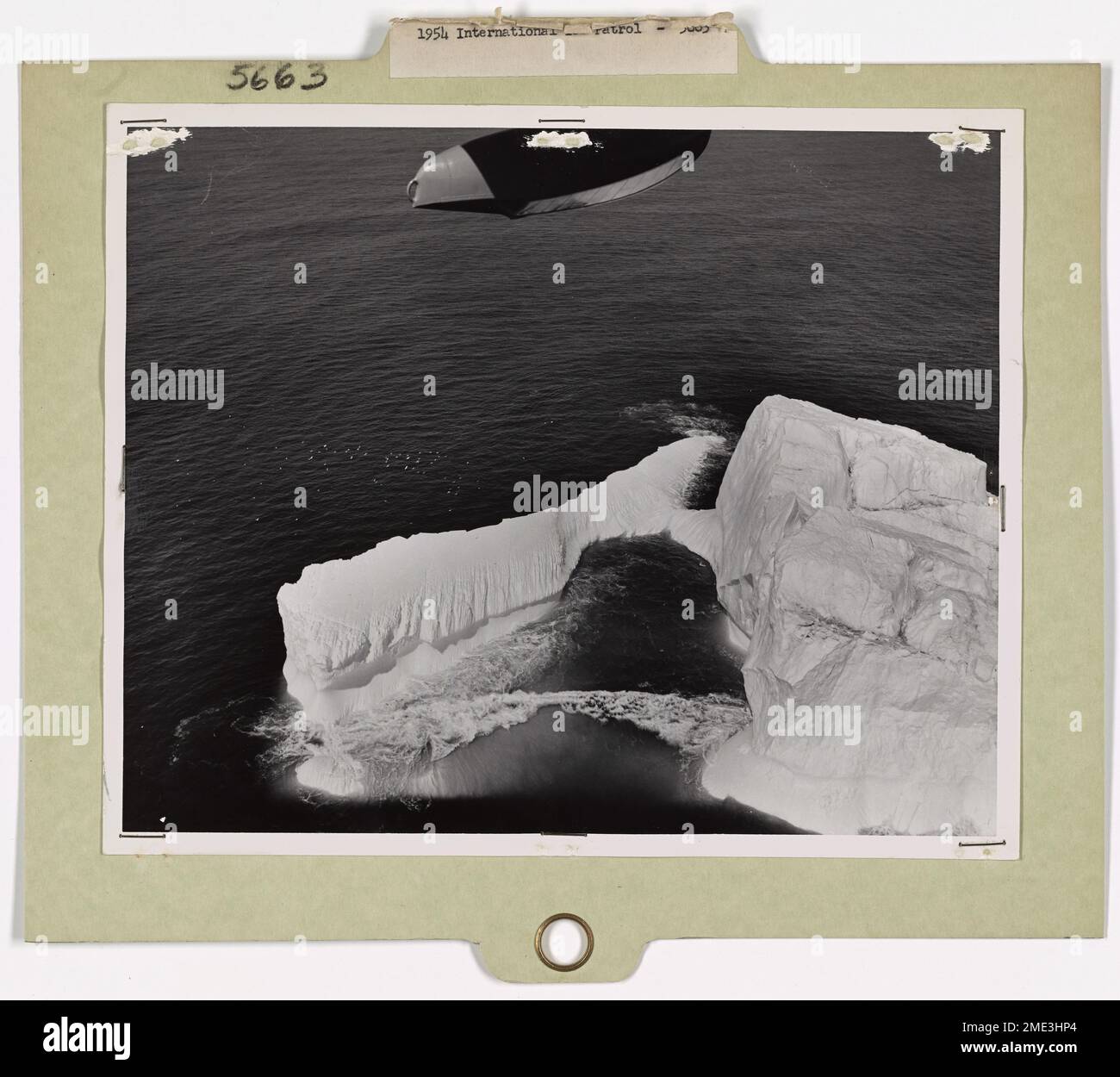1954 International Ice Patrol. This iceberg measuring between 150 to 200 feet high above water was sighted off the coast of Newfoundland by a Coast Guard ice patrol crew from an altitude of 650 feet. Arctic ice every spring and summer drifts southward into the North Atlantic Ocean where it becomes a menace to shipping. Icebergs calved from the West Greenland glaciers one summer usually spend their first winter in the vicinity of Melville Bay, their second winter near Cape Dier, and reach the Grand Banks during the following spring and summer. Although some bergs travel at faster rates and some

Image details
Contributor:
NB/USC / Alamy Stock PhotoImage ID:
2ME3HP4File size:
80 MB (2.9 MB Compressed download)Releases:
Model - no | Property - noDo I need a release?Dimensions:
5596 x 4997 px | 47.4 x 42.3 cm | 18.7 x 16.7 inches | 300dpiDate taken:
2 June 2017More information:
This image could have imperfections as it’s either historical or reportage.
1954 International Ice Patrol. This iceberg measuring between 150 to 200 feet high above water was sighted off the coast of Newfoundland by a Coast Guard ice patrol crew from an altitude of 650 feet. Arctic ice every spring and summer drifts southward into the North Atlantic Ocean where it becomes a menace to shipping. Icebergs calved from the West Greenland glaciers one summer usually spend their first winter in the vicinity of Melville Bay, their second winter near Cape Dier, and reach the Grand Banks during the following spring and summer. Although some bergs travel at faster rates and some slower, the journey accomplished usually covers 1, 800 miles. Despite the many icebergs that disintegrate before reaching the Grand banks, many thousands that have survived the journey are counted and tracked each year by the International Ice Patrol.